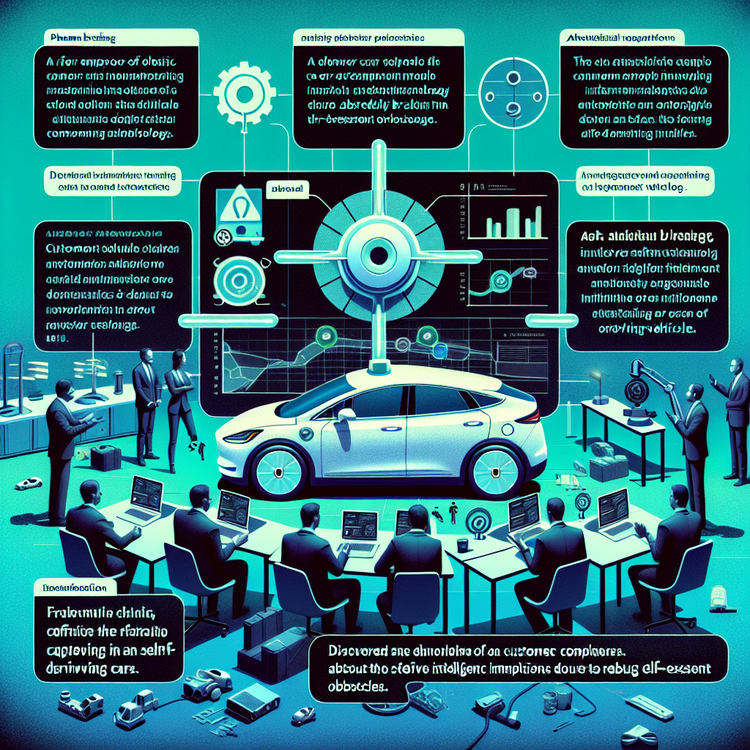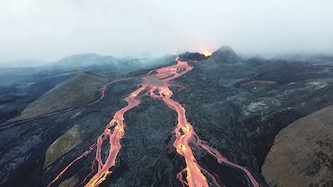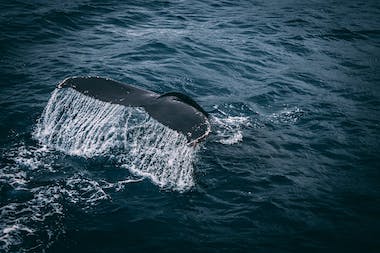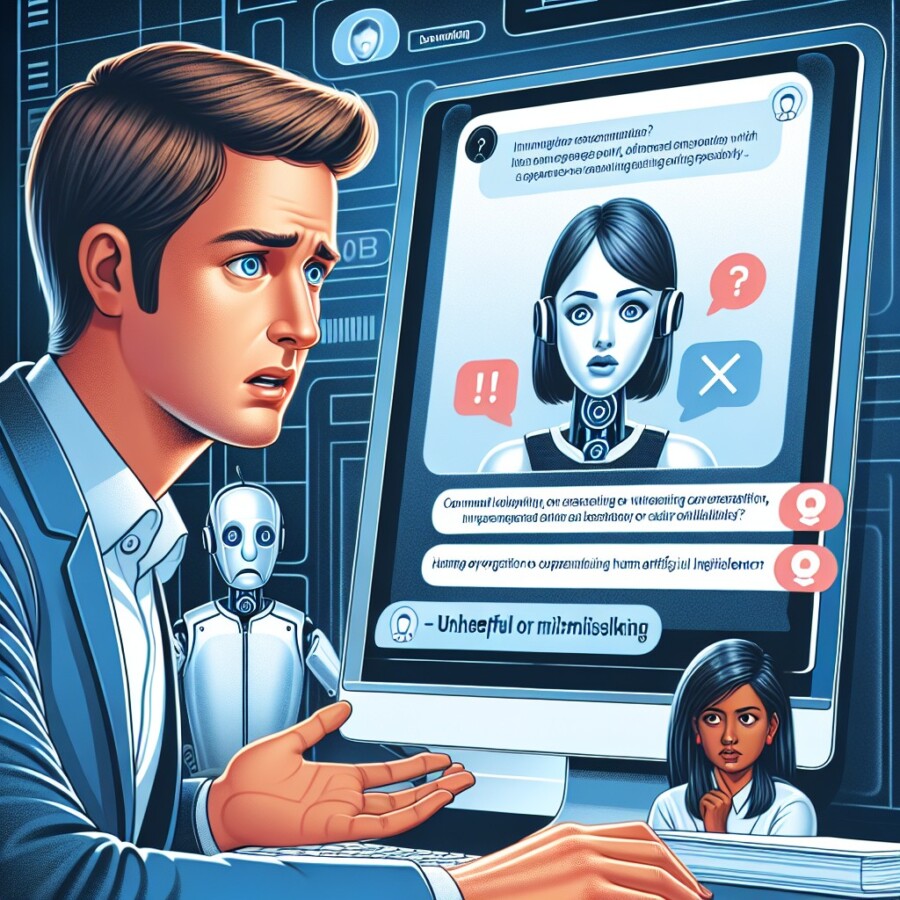A former employee of Tesla has raised concerns about the safety of the company’s self-driving technology. Lukasz Krupski leaked data, including customer complaints about Tesla’s braking and self-driving software, to a German newspaper in May. He believes that the technology is not yet ready to be used on public roads and that the hardware and software have not been adequately tested. Despite Elon Musk, the CEO of Tesla, praising the company’s self-driving technology, Krupski argues that it poses a risk to all road users. He claims to have found evidence that Tesla has not followed requirements for the safe operation of vehicles with autonomous or assistive-driving technology.
Krupski also discovered data suggesting that Tesla vehicles have experienced “phantom braking,” where the vehicles randomly brake in response to non-existent obstacles. Tesla claims that its Autopilot feature has resulted in fewer crashes compared to non-Tesla drivers, but these figures cannot be independently verified. The US Department of Justice has been investigating Tesla over its assisted driving features since January, and the company has faced questions from other agencies as well.
Krupski felt compelled to share the data he found with data protection authorities and has been recognized for his actions as a whistleblower. However, he admits that the experience has been terrifying and has affected his sleep. Jack Stilgoe, an associate professor at University College London, believes that Krupski’s claims raise wider concerns about the use of artificial intelligence in autonomous vehicles. The UK government has announced plans for an Automated Vehicles Bill to establish a legal framework for self-driving cars.
In conclusion, a former Tesla employee has expressed doubts about the safety of the company’s self-driving technology. He believes that the hardware and software are not yet ready for public roads and that Tesla has not followed requirements for the safe operation of vehicles with autonomous features. The employee’s claims have raised concerns about the use of artificial intelligence in autonomous vehicles. The UK government is working on legislation to regulate self-driving cars.
Original news source: Ex-Tesla employee casts doubt on car safety (BBC)
Listen:
Slow
Normal
Fast
Vocabulary:
| 1 | autonomous | Able to operate independently, without human control |
| 2 | leaked | Released or made public without authorization |
| 3 | requirements | Conditions or specifications that must be met |
| 4 | verified | Confirmed or proven to be true or accurate |
| 5 | whistleblower | A person who exposes wrongdoing or illegal activity within an organization |
| 6 | terrifying | Extremely frightening or causing extreme fear |
| 7 | legislation | Laws or rules created by a government or governing body |
| 8 | concerns | Worries or anxieties about something |
| 9 | operation | The act or process of functioning or working |
| 10 | hardware | The physical components of a computer or electronic device |
| 11 | software | The programs and other operating information used by a computer |
| 12 | features | Characteristics or attributes of something |
| 13 | framework | A basic structure or system used as a guide or support |
| 14 | agencies | Organizations or departments responsible for specific tasks or duties |
| 15 | regulate | To control or direct by rule or law |
Group or Classroom Activities
Warm-up Activities:
– News Summary
Instructions: In pairs, students will read the article and then summarize the main points in their own words. They can take turns sharing their summaries with the class.
– Opinion Poll
Instructions: Divide the class into small groups. Each group will discuss and debate their opinions on the safety of Tesla’s self-driving technology. After the discussion, each group will conduct an opinion poll within the class to see how many students agree or disagree with their viewpoint.
– Sketch It
Instructions: Give each student a blank sheet of paper and ask them to draw a visual representation of the concerns raised by the former Tesla employee. After they finish, students will share their drawings with a partner and explain their interpretation.
– Vocabulary Pictionary
Instructions: Write down key vocabulary words from the article on separate index cards. In pairs, one student will draw a card and try to draw a picture to represent the word, while the other student guesses the word. They can switch roles after a certain amount of time.
– Future Predictions
Instructions: In small groups, students will discuss and make predictions about the future of self-driving technology. They can consider the concerns raised by the former Tesla employee and how it might impact the development and implementation of autonomous vehicles. Each group will present their predictions to the class.
Comprehension Questions:
1. What concerns did Lukasz Krupski raise about Tesla’s self-driving technology?
2. Why does Krupski believe that the technology is not yet ready for public roads?
3. What evidence did Krupski find that Tesla has not followed requirements for the safe operation of autonomous vehicles?
4. What is “phantom braking” and why is it a concern?
5. How has Tesla claimed that its Autopilot feature has resulted in fewer crashes?
6. Why are these figures not independently verifiable?
7. Why has the US Department of Justice been investigating Tesla since January?
8. What wider concerns about artificial intelligence in autonomous vehicles do Krupski’s claims raise?
Go to answers ⇩
Listen and Fill in the Gaps:
A former (1)______ of Tesla has raised concerns about the safety of the company’s self-driving technology. Lukasz Krupski (2)______ data, including (3)______ complaints about Tesla’s braking and self-driving software, to a German newspaper in May. He believes that the technology is not yet ready to be used on public roads and that the hardware and software have not been adequately (4)______. Despite Elon Musk, the CEO of Tesla, praising the company’s self-driving technology, Krupski argues that it poses a risk to all road users. He claims to have found evidence that Tesla has not followed requirements for the safe (5)______ of (6)______ with autonomous or assistive-driving technology.
Krupski also discovered data suggesting that Tesla vehicles have experienced “phantom braking,” where the vehicles randomly brake in response to non-existent obstacles. Tesla claims that its (7)______ feature has resulted in fewer crashes compared to non-Tesla drivers, but these (8)______ cannot be independently verified. The US Department of Justice has been investigating Tesla over its assisted driving features since January, and the company has faced questions from other agencies as well.
Krupski felt compelled to share the data he found with data protection authorities and has been recognized for his actions as a whistleblower. However, he (9)______ that the experience has been terrifying and has affected his sleep. Jack Stilgoe, an associate (10)______ at University College London, believes that Krupski’s (11)______ raise wider concerns about the use of (12)______ intelligence in autonomous vehicles. The UK government has announced plans for an Automated Vehicles Bill to establish a legal (13)______ for self-driving cars.
In conclusion, a former Tesla employee has expressed doubts about the (14)______ of the company’s self-driving technology. He believes that the hardware and software are not yet (15)______ for public roads and that Tesla has not followed requirements for the safe operation of vehicles with autonomous features. The employee’s claims have raised concerns about the use of artificial intelligence in autonomous vehicles. The UK government is working on legislation to (16)______ self-driving cars.
Go to answers ⇩
Discussion Questions:
Students can ask a partner these questions, or discuss them as a group.
1. What is your opinion on the safety of self-driving technology?
2. Have you ever experienced “phantom braking” in a vehicle? How did it make you feel?
3. Do you think companies like Tesla should be required to have their self-driving technology independently verified? Why or why not?
4. How would you feel if you were driving on the road and encountered a vehicle with autonomous or assistive-driving technology?
5. Do you believe that the hardware and software of self-driving technology should undergo more testing before being used on public roads? Why or why not?
6. Have you ever driven a Tesla vehicle? If so, what was your experience like?
7. What do you think are the potential risks of using artificial intelligence in autonomous vehicles?
8. How do you think the use of self-driving cars will impact the job market for professional drivers?
9. Do you think the government should regulate the use of self-driving cars? Why or why not?
10. Have you ever reported a safety concern to authorities? How did it make you feel?
11. How do you think the use of self-driving technology will change the way we travel?
12. Do you trust autonomous vehicles to make safe decisions on the road? Why or why not?
13. What measures do you think should be taken to ensure the safety of self-driving technology?
14. How do you think the public’s perception of self-driving cars will change as more incidents and concerns are raised?
15. Would you feel comfortable using a self-driving car? Why or why not?
Individual Activities
Vocabulary Meanings:
Match each word to its meaning.
Words:
1. autonomous
2. leaked
3. requirements
4. verified
5. whistleblower
6. terrifying
7. legislation
8. concerns
9. operation
10. hardware
11. software
12. features
13. framework
14. agencies
15. regulate
Meanings:
(A) A person who exposes wrongdoing or illegal activity within an organization
(B) Able to operate independently, without human control
(C) The act or process of functioning or working
(D) To control or direct by rule or law
(E) Released or made public without authorization
(F) The programs and other operating information used by a computer
(G) Characteristics or attributes of something
(H) Conditions or specifications that must be met
(I) Confirmed or proven to be true or accurate
(J) A basic structure or system used as a guide or support
(K) Worries or anxieties about something
(L) Organizations or departments responsible for specific tasks or duties
(M) Laws or rules created by a government or governing body
(N) Extremely frightening or causing extreme fear
(O) The physical components of a computer or electronic device
Go to answers ⇩
Multiple Choice Questions:
1. What did Lukasz Krupski leak to a German newspaper?
(a) Data about customer complaints regarding Tesla’s braking and self-driving software
(b) Data about Tesla’s sales figures
(c) Data about Tesla’s financial performance
(d) Data about Tesla’s manufacturing process
2. According to Lukasz Krupski, what risk does Tesla’s self-driving technology pose?
(a) A risk to all road users
(b) A risk to Tesla drivers only
(c) A risk to pedestrians only
(d) No risk at all
3. What is “phantom braking”?
(a) When Tesla vehicles brake in response to real obstacles
(b) When Tesla vehicles accelerate suddenly for no reason
(c) When Tesla vehicles randomly brake in response to non-existent obstacles
(d) When Tesla vehicles do not respond to obstacles
4. Why can’t the figures on Tesla’s Autopilot feature be independently verified?
(a) The US Department of Justice has not finished its investigation
(b) Tesla’s data is not reliable
(c) Tesla has not released the data
(d) Other agencies have not finished their investigations
5. What has the US Department of Justice been investigating Tesla for?
(a) Its manufacturing process
(b) Its assisted driving features
(c) Its financial performance
(d) Its customer complaints
6. What recognition has Lukasz Krupski received for leaking the data?
(a) He has received a promotion at his new job
(b) He has been recognized as a whistleblower
(c) He has won a lawsuit against Tesla
(d) He has been given a financial reward
7. What wider concerns does Jack Stilgoe believe Lukasz Krupski’s claims raise?
(a) Concerns about the use of Tesla’s self-driving technology
(b) Concerns about the safety of all self-driving cars
(c) Concerns about the UK government’s plans for self-driving cars
(d) Concerns about the use of artificial intelligence in autonomous vehicles
8. What is the UK government working on in relation to self-driving cars?
(a) Legislation to ban self-driving cars
(b) Legislation to promote self-driving cars
(c) Legislation to increase funding for self-driving car research
(d) Legislation to regulate self-driving cars
Go to answers ⇩
True or False Questions:
1. The hardware and software of Tesla’s self-driving technology have not been adequately tested, according to the former employee.
2. The former employee has been recognized as a traitor for sharing the data he found with data protection authorities.
3. The former employee claims to have found evidence that Tesla has not followed requirements for the safe operation of autonomous or assistive-driving vehicles.
4. The UK government is not working on legislation to establish a legal framework for self-driving cars.
5. The US Department of Justice has been investigating Tesla over its unassisted driving features since January.
6. A current employee of Tesla leaked data about customer complaints regarding Tesla’s self-driving technology.
7. The former employee believes that Tesla’s self-driving technology is not yet safe for public roads.
8. Tesla vehicles have experienced “phantom braking,” where the vehicles randomly brake in response to non-existent obstacles.
Go to answers ⇩
Write a Summary:
Write a summary of this news article in two sentences.
Check your writing now with the best free AI for English writing!
Writing Questions:
Answer the following questions. Write as much as you can for each answer.
Check your answers with our free English writing assistant!
1. What concerns does Lukasz Krupski have about Tesla’s self-driving technology?
2. What evidence did Krupski find to support his claims about Tesla’s self-driving technology?
3. How has Tesla responded to the allegations made by Krupski?
4. What actions has Krupski taken as a result of his findings?
5. What wider concerns do Krupski’s claims raise about the use of artificial intelligence in autonomous vehicles?
Answers
Comprehension Question Answers:
1. What concerns did Lukasz Krupski raise about Tesla’s self-driving technology?
Krupski raised concerns about the safety of Tesla’s self-driving technology, particularly regarding the braking and self-driving software.
2. Why does Krupski believe that the technology is not yet ready for public roads?
Krupski believes that the hardware and software of Tesla’s self-driving technology have not been adequately tested, making it unsafe for public roads.
3. What evidence did Krupski find that Tesla has not followed requirements for the safe operation of autonomous vehicles?
Krupski found evidence suggesting that Tesla has not followed requirements for the safe operation of vehicles with autonomous or assistive-driving technology.
4. What is “phantom braking” and why is it a concern?
“Phantom braking” refers to when Tesla vehicles randomly brake in response to non-existent obstacles. It is a concern because it poses a risk to road users and can potentially cause accidents.
5. How has Tesla claimed that its Autopilot feature has resulted in fewer crashes?
Tesla claims that its Autopilot feature has resulted in fewer crashes compared to non-Tesla drivers.
6. Why are these figures not independently verifiable?
These figures are not independently verifiable because there is no independent verification or validation process in place to confirm the accuracy of Tesla’s claims.
7. Why has the US Department of Justice been investigating Tesla since January?
The US Department of Justice has been investigating Tesla since January over its assisted driving features to determine if the company has complied with safety regulations and requirements.
8. What wider concerns about artificial intelligence in autonomous vehicles do Krupski’s claims raise?
Krupski’s claims raise concerns about the use of artificial intelligence in autonomous vehicles, particularly regarding the safety and reliability of the technology.
Go back to questions ⇧
Listen and Fill in the Gaps Answers:
(1) employee
(2) leaked
(3) customer
(4) tested
(5) operation
(6) vehicles
(7) Autopilot
(8) figures
(9) admits
(10) professor
(11) claims
(12) artificial
(13) framework
(14) safety
(15) ready
(16) regulate
Go back to questions ⇧
Vocabulary Meanings Answers:
1. autonomous
Answer: (B) Able to operate independently, without human control
2. leaked
Answer: (E) Released or made public without authorization
3. requirements
Answer: (H) Conditions or specifications that must be met
4. verified
Answer: (I) Confirmed or proven to be true or accurate
5. whistleblower
Answer: (A) A person who exposes wrongdoing or illegal activity within an organization
6. terrifying
Answer: (N) Extremely frightening or causing extreme fear
7. legislation
Answer: (M) Laws or rules created by a government or governing body
8. concerns
Answer: (K) Worries or anxieties about something
9. operation
Answer: (C) The act or process of functioning or working
10. hardware
Answer: (O) The physical components of a computer or electronic device
11. software
Answer: (F) The programs and other operating information used by a computer
12. features
Answer: (G) Characteristics or attributes of something
13. framework
Answer: (J) A basic structure or system used as a guide or support
14. agencies
Answer: (L) Organizations or departments responsible for specific tasks or duties
15. regulate
Answer: (D) To control or direct by rule or law
Go back to questions ⇧
Multiple Choice Answers:
1. What did Lukasz Krupski leak to a German newspaper?
Answer: (a) Data about customer complaints regarding Tesla’s braking and self-driving software
2. According to Lukasz Krupski, what risk does Tesla’s self-driving technology pose?
Answer: (a) A risk to all road users
3. What is “phantom braking”?
Answer: (c) When Tesla vehicles randomly brake in response to non-existent obstacles
4. Why can’t the figures on Tesla’s Autopilot feature be independently verified?
Answer: (c) Tesla has not released the data
5. What has the US Department of Justice been investigating Tesla for?
Answer: (b) Its assisted driving features
6. What recognition has Lukasz Krupski received for leaking the data?
Answer: (b) He has been recognized as a whistleblower
7. What wider concerns does Jack Stilgoe believe Lukasz Krupski’s claims raise?
Answer: (d) Concerns about the use of artificial intelligence in autonomous vehicles
8. What is the UK government working on in relation to self-driving cars?
Answer: (d) Legislation to regulate self-driving cars
Go back to questions ⇧
True or False Answers:
1. The hardware and software of Tesla’s self-driving technology have not been adequately tested, according to the former employee. (Answer: True)
2. The former employee has been recognized as a traitor for sharing the data he found with data protection authorities. (Answer: False)
3. The former employee claims to have found evidence that Tesla has not followed requirements for the safe operation of autonomous or assistive-driving vehicles. (Answer: True)
4. The UK government is not working on legislation to establish a legal framework for self-driving cars. (Answer: False)
5. The US Department of Justice has been investigating Tesla over its unassisted driving features since January. (Answer: False)
6. A current employee of Tesla leaked data about customer complaints regarding Tesla’s self-driving technology. (Answer: False)
7. The former employee believes that Tesla’s self-driving technology is not yet safe for public roads. (Answer: True)
8. Tesla vehicles have experienced “phantom braking,” where the vehicles randomly brake in response to non-existent obstacles. (Answer: True)
Go back to questions ⇧













